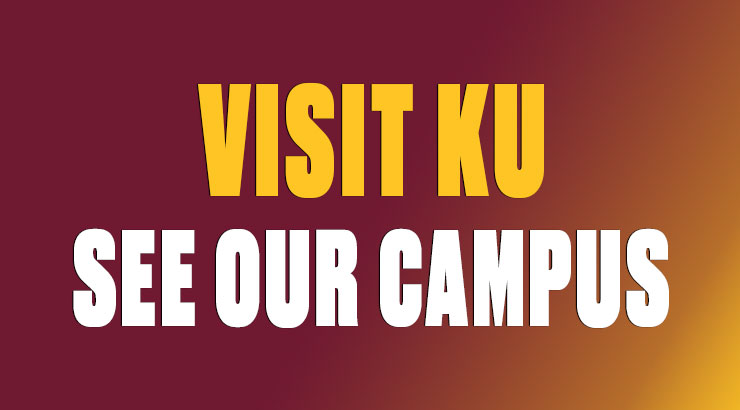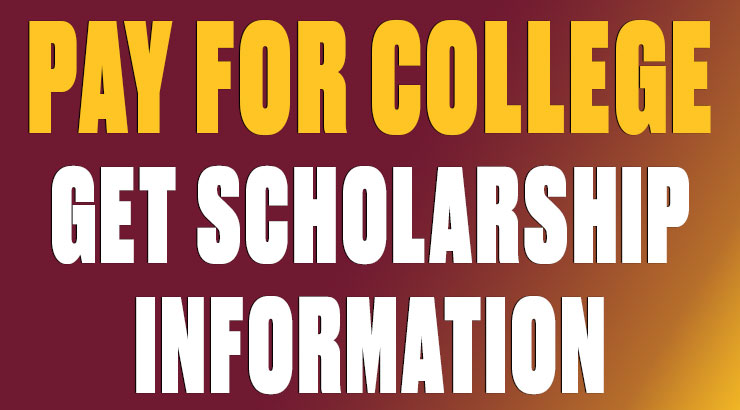Immigration Requirements
Step 1: Pay your Deposit or COnfirm your Enrollment
Undergraduate and Exchange Students: Pay your non-refundable $300 Registration Deposit to confirm your enrollment. The deposit is required before Kutztown issues a Form I-20 or Form DS-2019.
You can pay the deposit after you view your Decision Letter, using the following options:
- Pay with U.S. dollars using a credit card through your applicant status portal.
- Pay with your home country currency using Flywire.
Graduate Students: You do not need to pay a deposit. You only need to confirm your enrollment by accepting the offer of admission. Return to the applicant status portal. You will see your offer listed in the upper-right corner. Use the pull-down option to select and submit your decision.
Step 2: Submit required documents
International students can upload the documents needed to request an I-20 form or DS-2019 form on the application, before or after they are admitted. The following forms will be listed on the Application Status Page Checklist:
1. Sources of Funds Form: Access the form on your Applicant Status Portal.
2. Submit a copy of your passport (the picture and information page) on your Applicant Status Portal.
3. Financial supporting documents: Upload acceptable financial support documents on your Applicant Status Portal. See the "Acceptable Financial Support Documents" section below to see what documents are and are not accepted.
- View required financial costs: You must provide financial documents that equal the Total Required for Forms I-20/DS-2019 provided on the International Tuition and Costs webpage.
- Is a family member or organization helping financially sponsoring you? If yes, your sponsor needs to sign the Financial Sponsorship Form (access the form on your Applicant Status Portal) indicating how much money they are providing you each year. Email the signed form to international@kutztown.edu.
-
*** Acceptable Financial Support Documents ***
Acceptable Financial Support Documents:
Bank Statement(s) or Bank Letter(s): Bank statements, investment account statements, balance certificates issued by a financial institution, and letters from financial institutions confirming the availability of funds.
- All statements/letters must be in English and the account holder name must be easily identifiable. Unofficial translations are accepted.
- All statements/letters must be dated within the past 3 months at the time of submission.
- All bank statements or letters must include the following:
- Name of the bank or on bank letterhead
- Name of the account holder
- Date the statement was issued
- Account balance (how much is currently in the account)
- Type of currency on the statement
- Type of account (Ex. Savings, checking)
Bank accounts must be for liquid (cash) assets (Example: Cash, Savings, CD with maturity date on or before start of enrollment at Kutztown University). If the bank statement is for an investment account the bank statement must clearly indicate how much funds are available in liquid (cash) assets and state that you can access them as needed.
Loan and Scholarship Certificate(s) or Letter(s):
- Must be on official letterhead.
- Must include the name of applicant.
- Must indicate the amount of the approved loan or scholarship.
- Conditional loan approvals may be accepted if the condition is the receipt of the I-20/DS-2019.
- Must indicate the date when the loan will be issued to the student.
Financial Sponsorship Letter:
- Must be on official letterhead.
- Must include the name of applicant.
- Must include the amount of money that will be sponsored.
- The duration of funding (start and end dates).
- Any requirements or conditions of funding:
- Example: Degree and major field of study for which the funds are available.
- Example: Funds are permitted to cover tuition, fees, living expenses, books and supplies, etc.
Not Acceptable as Proof of Cash Availability:
- Documents older than 3 months.
- Tax return forms or documents.
- Payroll reports or expected income statements.
- Investment accounts without proof of liquid (cash) assets. (Example: Stocks, bonds, real estate that do not permit the applicant from accessing the funds).
- Loans or scholarship applications that are still pending.
- Statements about property, jewelry, cars, pr other forms of non-liquid (cash) assets.
- Retirement accounts/Pension funds.
- Insurance policies.
-
Difference between F-1 and J-1 Student Visas
All full time, degree seeking international students are eligible for an F-1 visa. Most Kutztown University international students hold F-1 visa status, however, some students may be eligible for both a J-1 visa and F-1 visa. In this case you may have to choose which one is best for you.
To be eligible for a J-1 visa at least half of your total financial support must be from a source other than personal or family funds. This financial support may be a tuition or housing waiver, scholarship, fellowship, or assistantship from an external funding source such as your home university, home government, a corporate sponsor, or the Kutztown University. Students with only personal or family funding are NOT eligible for a J-1 visa.
Differences Between F-1 and J-1 Student Visas
Category F-1 Visa J-1 Visa Source of Funding
Supported by personal/family funds, outside funds, or a combination of both
More than 50% of funding is from an outside source such as a scholarship, fellowship, or government sponsorship
Proof of Funding
Student must show KU and the U.S. consulate proof of sufficient funding for the first year of study
Student must show KU and the U.S. consulate proof of sufficient funding for the entire duration of the academic program
Off Campus Employment
Two authorization options:
Curricular Practical Training (CPT) for working off campus during studies. This work authorization is approved one semester at a time.
Optional Practical Training (OPT) for working off campus, usually after the completion of studies. This is a 12 month work authorization. Student in STEM fields may be authorized for an additional 17 months.
One authorization option:
Academic Training (AT) for working off campus during studies or after the completion of studies. This work authorization is for up to 18 months or the length of study in the program, whichever is shorter. PhD students may be authorized for an additional 18 months.
The length of approved AT is equal to the length of time spent studying in the U.S. For complete details please visit the employment section of our website.
Dependents
Dependents in F-2 status may study part time and are not eligible for employment.
Dependents in J-2 status may study full time and may apply for employment authorization.
Long Term Implications of a J-1 Visa
J-1 students (and J-2 dependents) are subject to a two-year home country physical presence requirement. It requires J-1 students and their J-2 dependents to return home for at least two years after completing the exchange visitor program. This requirement is part of U.S. law, in the Immigration and Nationality Act, Section 212(e). If you cannot return home for two years, you must apply for a waiver. The Department of Homeland Security must approve your waiver before you can change status in the United States or receive a visa in certain categories.
12 Month Bar After Previous J-1 Participation
J-1 students who have studied in the U.S. for more than 6 months may not return as a J-1 Research Scholar (another J-1 visa category, often used for post-doctoral research) until at least 12 months have passed. This 12-Month Bar is separate from the two-year home country physical presence requirement listed above. J-2 dependents are also subject to this bar.
-
Change of Status for F-1 Visa
If you are an active visa holder in the United States, it may be possible for you to request a change of status through the U.S. government to receive F or J visa designation without the need to travel outside the country and apply for a new visa. You may find information on this page about the change of status process as well as things to consider before applying.
An F-1 student is a nonimmigrant who is pursuing a full course of study to achieve a specific educational or professional objective at an academic institution in the US. Once the educational objectives have been achieved, the F-1 student is expected to return to his or her residence abroad.
A student acquires F-1 status using Form I-20, issued by the U.S. school which the student is attending/planning to attend. Status is acquired in one of two ways:
- By entering the United States with the I-20 and an F-1 visa obtained at a U.S. consulate abroad (Canadian citizens are exempt from the visa requirement)
- By applying to USCIS for change of nonimmigrant status (if the student is already in the United States and cannot travel). Please note that if you choose this option, you will not receive an F-1 travel visa, only F-1 status. This means that if you later travel outside the U.S. while in F-1 status, you will have to apply for F-1 visa at a U.S. consulate in order to be able to return to the U.S.
A person of any non-immigrant status except C, D, K, or M (and in some cases J), and except those who entered the United States under the terms of the Visa Waiver Program, can apply for a change to F-1 status if they have maintained lawful non-immigrant status up to the time of application. Those with J status who are subject to 212(e) two-year home country physical requirement may not change status in the U.S. unless a waiver has been granted. Non-immigrants in A, G, or NATO status must first complete Form I-566, and have it properly endorsed by the foreign mission to the U.S. and the Department of State.
Documentation Needed to Apply for Change of Status to F-1
- G-1145, E-Notification of Application/Petition Acceptance
- A cover letter (one page) requesting the change of status from your current status to F-1. This letter should include a brief explanation as why you wish to change to F-1 status. You should also provide a checklist of the documentation you are including in your application.
- USCIS Form I-539 Application to Extend/Change Nonimmigrant Status, including application fee.
- Evidence of financial support (i.e., bank statement, assistantship letter, etc.). If you have been offered an assistantship from a department and therefore will need to start your on-campus job under F-1 employment authorization, you may want to request USCIS to expedite your change of status application. There is no guarantee that your application will be expedited, but there is no harm in asking. Note: After your change of status to F-1 is approved, the earliest date you may start working on campus is 30 days before the first day of classes of your first term as F-1 student.
- Copy of the admission letter from Kutztown University.
- Copy of your entire F-1 Form I-20 (sign in “Student Attestation” section on page 1 of the form before making a copy). Do NOT send your original I-20. USCIS does not require the original and will not return it.
- Copy of the receipt indicating payment of the SEVIS fee. Note: The SEVIS fee is separate from the application fee; both fees must be paid if you are applying for the change of status within the U.S.
- Copies of all of the immigration documents (e.g. DS-2019, F-2 I-20, I-797, paper or print-out of electronic Form I-94, valid passport, visa stamp, EAD card, etc.) showing that you are currently in lawful non-immigrant status.
- Copy of the waiver of the 212(e) Two-Year Foreign Residency Requirement (if you were previously in J status and subject to the requirement), if applicable.
We recommend that you make a copy of this application for your own record.
Mailing Address and Where to File
It may take USCIS several months to adjudicate an I-539 request, and therefore you should use a return address that will be valid for many months. We do not recommend trying to change your I-539 mailing address once your application has been submitted to USCIS.
If you know that you will be moving soon, we recommend using a friend or relative’s address in the U.S. If you select this strategy, make sure to include the name of your friend or relative on the line of the I-539 form that says “In care of.” Be sure to verify that their name is on their mail box. The address that you use on your I-539 will dictate to which USCIS Service Center you should mail your application.
The U.S. Postal Service is the only service that delivers to a P.O. Box address. We recommend that you use a trackable mailing method so that you have delivery confirmation of your application. If you send your application with a method that requires a signature upon delivery, use the express mail and courier deliveries address below.
If your change of status is pending with USCIS and you later decide to leave the U.S., your change of status is considered to have been abandoned.
Important Things to Remember
If you are currently in F-3 Status:
Source: 8 CFR (Code of Federal Register) § 214.2(f)(15)(ii)
- Individuals in F-2 status are eligible for part time study. However, once your change of status to F-1 is approved, you are required to be enrolled full time. If your change of status has not been approved by the deadline for adding/dropping classes, your I-20 start date will be deferred until the start of the next semester and you must stay enrolled part time until the end of the current semester in order to maintain your F-2 status.
If you are currently in B1/B2 status:
Source: 8 CFR § 214.2(b)(7) and §248.1(c)
- Individuals in B1/B2 status are prohibited from “enrolling in a course of study” until after USCIS approves their change of status application.
If you are currently in any other status (e.g., H, J, L, E, etc.):
- If your current status allows full-time studies in the U.S., you may start classes before your change of status application is approved. However, you are not allowed employment under F-1 status until after your application is approved. For example, if you have an assistantship, you won’t be able to start it until after you receive your F-1 status.
Traveling and Reentering the U.S.
The alternative method of changing to F-1 status is through travel and re-entry, which may be preferred over the in-country change of status in certain situations. In this case, you would depart the U.S. and then apply for an F-1 visa at a U.S. embassy or consulate abroad, preferably the local consulate in your home country. If the F-1 visa application is approved and the F-1 visa is issued, then you can re-enter the U.S. using your F-1 Form I-20 and F-1 visa. At the Port of Entry, your electronic Form I-94 will be updated to show your status as F-1 and the Admit Until Date as D/S, which confirms F-1 status. Note: Canadian citizens are exempt from the requirement of a having an F-1 visa to re-enter the U.S. in F-1 status. But travel and re-entry are still required for Canadian citizens to obtain F-1 status.
If you would like to discuss the risks and benefits of your strategy for change of status, or have questions about your options, schedule an appointment with the Office of International Education and Global Engagement.
Step 3: SEVIS STEPS
STUDENTS APPLYING FOR A VISA = PAY THE SEVIS I-901 FEE:
The International Office at Kutztown University will issue you a Form I-20 (F Visa) or a Form DS-2019 (J Visa) after you complete Steps #1 and #2.
Before you apply for your student visa to gain entry into the United States, you must pay the SEVIS fee (Form I-901). The U.S. Department of Homeland Security (DHS) charges a fee of $350 for F Visa students and $220 for J Visa (Exchange students) to use the Student and Exchange Visitor Information System (SEVIS).
Note: Some countries may or may not be required to pay the
-
Instructions on Paying the SEVIS Fee
This fee may be paid by the student or another person (friend or family). The SEVIS fee must be paid in U.S. dollars using one of the approved methods.
You will need the Kutztown University I-20 or DS-2019 to pay the SEVIS fee. Review your I-20 or DS-2019 for accuracy, including your name, program of study, and program begin and end dates. Notify international@kutztown.edu immediately if there are errors
on your form.OPTION 1: Online (Digital Form)
- Complete and submit the Form I-901, which you will find online at www.fmjfee.com.
- Pay the fee using Visa, MasterCard, or American Express.
- Print the payment confirmation and keep it with the documents that you will take to your visa interview.
OPTION 2: By Mail (Paper Form)
Citizens of Cameroon, Ghana, Kenya, and Nigeria must complete the paper I-901 Form and pay with a Western Union money transfer, cashier’s check, or money order.
- Print and complete the Form I-901, which you can get online.
- Send the Form I-901 with your check or money order to the address listed in the instructions.
- Print
confirmation of payment from www.fmjfee.com.
Contact the I-901 Helpline for assistance: +1 703-603-3400.
I-901 RECEIPT: Keep the printed I-901 Payment Confirmation of Payment. You will need it later for proof of payment of the SEVIS fee. All receipts must be confirmed AT LEAST three (3) U.S. government working days before your visa application interview.
STUDENTS IN THE U.S. WITH AN F VISA = SEVIS TRANSFER REQUEST:
This is the last immigration item you need to complete. The International Office at Kutztown University will issue you a Form I-20 (F Visa) after you complete the following step:
Students already in the U.S. on a student visa who need to transfer their SEVIS record to Kutztown University should complete the SEVIS Transfer In Form. Their current immigration advisor needs to complete the form. Your current immigration advisor can reach out to international@kutztown.edu to submit the form and to ask any questions.
The school code for Kutztown University is PHI214F00311000 for F Visa students.
The program code for Kutztown University is P-1-05456 for J Visa students.
Step 4: Schedule visa appointment / Prepare for visa interview
Note for Citizens of Canada and Bermuda: No visa or visa application is required. Pay the SEVIS I-901 fee and keep the receipt. You will present the SEVIS I-901 Payment Confirmation/Receipt at a U.S. Port of Entry.
1. Complete Form DS-160. You can apply for a visa 3 days after you pay the SEVIS I-901 fee.
2. Schedule an appointment at a U.S. Consulate or Embassy to apply for the F-1 or J-1 student visa. You can look up your local embassy or consulate online. Visit state.gov for more information on applying for a visa. The earliest students can apply for an F-1 visa is now 365 days (previously 120 days) before the program start date on your Form I-20. Wait times for visa appointments can differ. The U.S. Department of State Global Visa Wait Times website allows you to check wait times for your local embassy or consulate online.
3. Notify international@kutztown.edu of your visa appointment date.
4. Prepare your Visa Documents and Prepare for the Visa Interview. See helpful information linked in the sections below:
-
What to Bring to the Visa Interview
- A passport, which must be valid for at least six months beyond your period of stay in the U.S. Be sure there are at least three empty pages in your passport. If needed, request additional pages prior to your visa interview.
- Form I-20 (sign the form under Item 11) or Form DS-2019 (sign the form at the bottom of page 1)
- Kutztown University admissions letter (Includes merit scholarship and tuition reduction)
- Kutztown University scholarship letter(s) (If applicable)
- Financial supporting documents that shows you have sufficient funds to cover your tuition and living expenses. These should be the same documents (or updated versions) you submitted to the International Office for the issuance of the Form I-20 or Form DS-2019.
- I-901 Payment Confirmation/Receipt of the SEVIS fee.
- DS-160 Form Nonimmigrant Visa Application confirmation page.
- Receipt for the DS-160 Form Nonimmigrant Visa Application fee payment.
- Photo: You must bring one printed photo if your photo upload fails; photo requirements are listed online at travel.state.gov.
- Any additional information that proves that you have no intention of immigrating to the U.S. and that you plan to return to your home country after finishing your studies in the U.S. This may include proof of property, list of family members and photos, or other ties to your community.
-
Visa Interview Tips and Practice Questions:
The visa interview may last 30 seconds or may be as long as 5 minutes. During that time, the visa officer is required to determine 3 things during the visa interview:
#1 What is your purpose of going to the U.S.?
#2 Can you afford to live and study in the U.S.?
#3 Do you have plans to immigrate to the U.S.? Will you return to your home country upon completion of your program?BE COMFORTABLE - Get a good night of sleep. Don't stay up late practicing.
BE CONFIDENT - Smile and give eye-contact. Remain calm during the interview.
BE KNOWLEDGEABLE - You need to know basic information about Kutztown University, otherwise a visa officer may question the legitimacy of the program or the university.DO NOT LIE - The officer is trying to determine if you are telling the truth in your answers.
DO NOT MEMORIZE ANSWERS - The officer will see this as a sign that you are trying to lie.
DO NOT ASSUME A QUESTION - If you can’t understand the question, it is better to ask “Can you repeat the question?” or to say “Sorry, I don’t understand the question.”THINGS TO KNOW ABOUT KUTZTOWN:
- KU is a public university and part of the Pennsylvania State System of Higher Education.
- KU is accredited by Middle States Commission on Higher Education.
- KU was established in 1866.
- KU has about 7,500 students.
SAMPLE QUESTIONS:
- What is the name of your school?
- Where is your school located?
- Why did you choose to study at this university?
- What is your major? What are you studying?
- Why did you pick that major to study?
- How long are you studying in the U.S.?
- Do you really need to study in the U.S.?
- Who will pay for your studies?
- What will you do to improve your English?
- Do you work hard?
- How many hours do you study in a day?
- What are you going to do after your finish your studies in the U.S.?
- Can I see your transcripts? Can I see your class schedule?
- Do you have any family or friends in the U.S.? - What do they do?
- Have you been to the U.S. before? - What did you do? Where did you go?
- Where do you want to visit in the U.S.?
- What are your hobbies? What is your favorite movie? Music?
- What is your mother’s / father's name?
- How much is your parents’ salary?
- What does your father / mother do for work?
- Do your parents support your study in the U.S.?
Other Helpful Resources
- U.S. Immigration & Customs Enforcement FAQ for F-1 Nonimmigrant: Provides important information on what to expect when arriving at a U.S. port of entry.
- Travel.State.Gov: Student Visa Process
- NAFSA: 10 Points to Remember When Applying for Your Student Visa
- InternationalStudent.com: F-1 Student Visa






